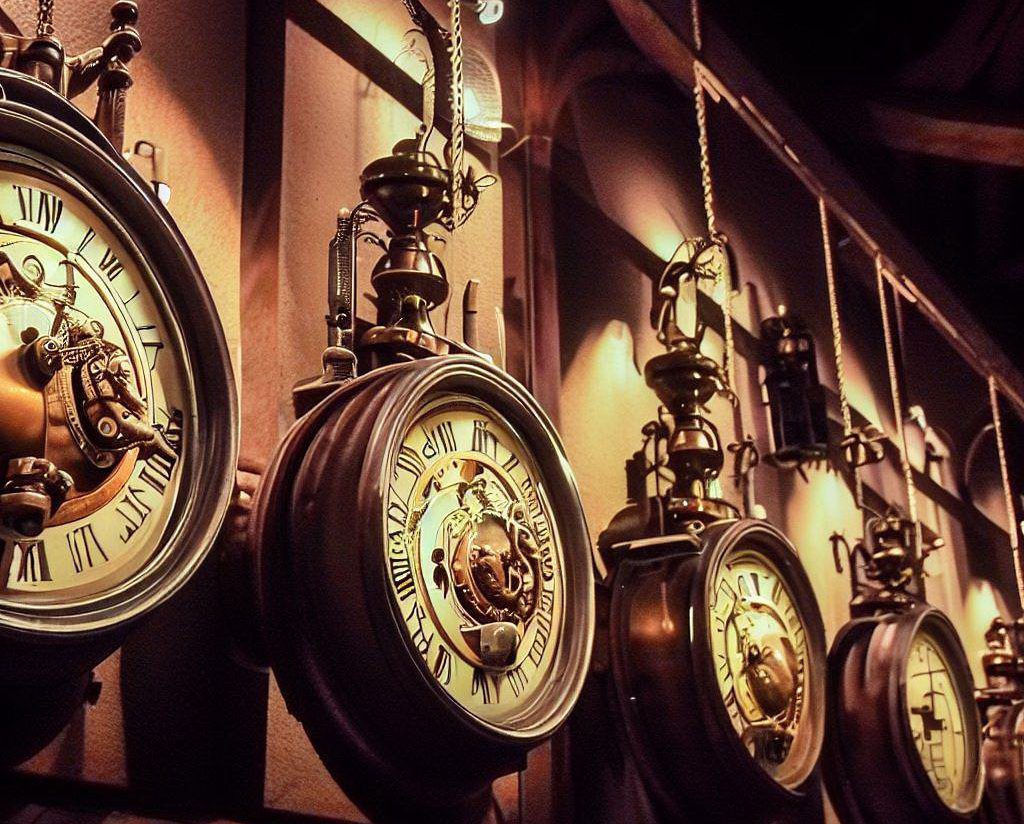Introduction:
In the wizarding world, where magic is both wondrous and mysterious, few objects capture the imagination as intensely as the Time-Turner. Introduced in “Harry Potter and the Prisoner of Azkaban,” this magical device allows witches and wizards to manipulate time, raising a myriad of questions about causality, destiny, and the very fabric of reality. This article embarks on a paradoxical exploration of the Time-Turner’s enchanting magic, delving into its complexities and the philosophical dilemmas it poses.
The Functionality of Time-Turners:
The Time-Turner, a seemingly innocuous hourglass pendant, conceals an astounding capability: the ability to travel back in time. As Hermione Granger demonstrated, turning the hourglass allows one to revisit specific moments in the past. However, this magical feat is not without its intricacies, prompting us to examine the mechanics and limitations that govern time manipulation.
Temporal Paradoxes:
The allure of the Time-Turner is matched only by the paradoxes it introduces. The concept of altering the past raises questions about the potential consequences of changing events, creating temporal loops and alternate realities. We delve into the classic “grandfather paradox” and explore how the Time-Turner navigates such temporal intricacies within the bounds of J.K. Rowling’s magical world.
Determinism vs. Free Will:
The Time-Turner raises profound philosophical questions surrounding determinism and free will. If one can travel back in time and alter the past, does it imply that destiny is malleable? Or does the very act of attempting to change events inevitably lead to the creation of the future they sought to avoid? We explore the implications of these questions within the context of the wizarding universe.
The Role of the Observer:
A key element in the Time-Turner’s operation is the interaction between the present and the past. This interaction introduces the concept of observers and how their actions influence events. The Time-Turner reveals that events may not always be as linear as they seem, emphasizing the interplay between agency and observation in shaping the unfolding narrative.
Ethical Dilemmas and Moral Responsibility:
The use of Time-Turners brings forth ethical quandaries and moral responsibilities. Characters like Hermione must grapple with the question of whether certain actions should be altered, even if they have the power to do so. We explore the intricate web of decisions and the ethical considerations involved in manipulating time for personal or greater good.
The Time-Turner’s Impact on Characters:
Beyond its philosophical implications, the Time-Turner holds personal significance for the characters who wield it. Hermione’s use of the Time-Turner reveals her determination, resourcefulness, and willingness to take risks. The device’s presence underscores the characters’ growth as they navigate the complexities of time travel.
The Time-Turner’s Symbolism:
The Time-Turner serves as a metaphor for the intricate interconnectedness of events and the delicate balance between cause and effect. Its very existence symbolizes the magic and mystery that the wizarding world offers, inviting us to ponder the enchanting complexities of the universe.
Conclusion:
The Time-Turner, both a captivating magical artifact and a philosophical enigma, invites us to explore the boundaries of time itself. As we’ve journeyed through its paradoxes, mechanics, and ethical dilemmas, we’ve unearthed a tapestry of thought-provoking questions. While the Time-Turner remains a device of fantastical fiction, its presence ignites our own musings about time, destiny, and the uncharted territories of existence. This exploration serves as a testament to the magic of J.K. Rowling’s world, where even the impossible becomes a source of contemplation and wonder.

